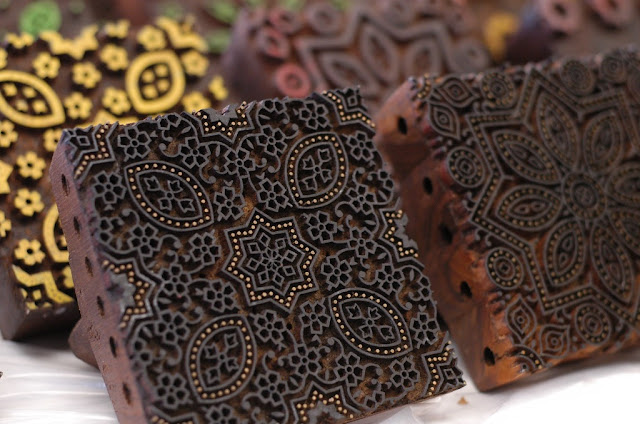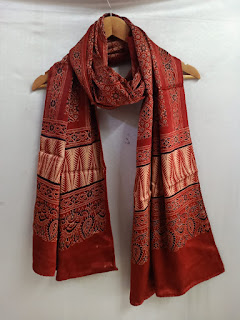Mastering the Art of Ajrakh Hand Block Printing: A Deep Dive into the Traditional Craftsmanship
AJRAKH HAND BLOCK
Process and Techniques
This refers to a traditional textile printing technique that originated in the regions of Sindh in Pakistan and Kutch in India. It involves a complex and intricate process of block printing using natural dyes on fabric. Ajrakh hand block prints are known for their vibrant natural organic colors, geometric patterns, and unique designs.📰Table of Content
- Introduction
- The Ajrakh hand block process can be divided into several stages
- Preparation of Fabric
- Design Carving
- Printing
- Resist Printing
- Dyeing
- Washing and Drying
- Repeating the Process
- Finishing Touches
- Conclusion
The Ajrakh hand block process can be divided into several stages
Preparation of Fabric
The process typically starts with washing and preparing the fabric. The fabric is usually cotton or silk, which is soaked in a mixture of water and a natural mordant called alum to improve dye absorption.
Design Carving
Skilled artisans create intricate designs on wooden blocks. These blocks are hand-carved with precision to represent specific patterns and motifs that are characteristic of Ajrakh Hand Block prints.
Printing
In this stage the fabric is spread on a flat surface, and the wooden blocks are dipped in natural dyes made from plants, minerals, and other organic materials. The blocks are then pressed firmly onto the fabric to transfer the design. This process is repeated multiple times to create the desired pattern, and different blocks are used for different vegetable colors.
Resist Printing
In this tedious process of Ajrakh, after the initial round of hand block printing, a resist paste made from natural gum and clay is applied to specific areas of the fabric. This paste acts as a barrier and prevents those areas from absorbing further dyes.
The fabric is immersed in a large vat containing natural dyes. The dyes used in Ajrakh hand block printing are derived from plants and minerals, such as indigo for blue, madder root for red, turmeric for yellow, and iron filings for black. The fabric is left to soak in the dye bath for a specific duration to achieve the desired color intensity.
Once the fabric has absorbed the dyes with Ajrakh Hand Blocks, it is carefully washed to remove any excess dye and resist paste. This is usually done in flowing water bodies like rivers, which also help in setting the dyes. The fabric is then dried under the scorching heat of the sun.
The resist printing, dyeing, washing, and drying steps are repeated multiple times to achieve intricate designs with multiple layers of colors. This process requires great skill and precision to align the blocks accurately and maintain the integrity of the design.
Finishing Touches
After the fabric has undergone several rounds of printing, dyeing, and washing, it is ready for the final finishing touches. This may involve additional handwork, such as embroidering or adding decorative elements to enhance the beauty of the fabric
The Ajrakh hand block process is highly labor-intensive and time-consuming, often taking several weeks or even months to complete a single piece of fabric. The use of natural dyes and traditional techniques makes Ajrakh hand block prints environmentally friendly and sustainable. The resulting fabric showcases the artistry, cultural heritage, and craftsmanship associated with this ancient textile tradition.
Conclusion
The Ajrakh hand block process is highly labor-intensive and time-consuming, often taking several weeks or even months to complete a single piece of fabric. The use of natural dyes and traditional techniques makes Ajrakh hand block prints environmentally friendly and sustainable. The resulting fabric showcases the artistry, cultural heritage, and craftsmanship associated with this ancient textile tradition.🛒Get a discount with coupon code BLOG25





.jpeg)


Informative
ReplyDelete